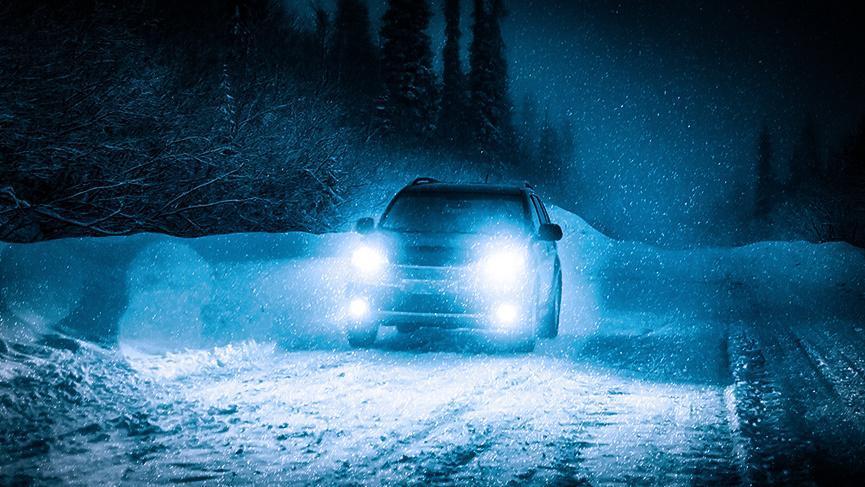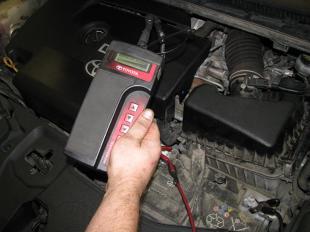
Ten things to check in your car before winter
 See what parts of the car you need to inspect so that it is safe to drive in winter, and the engine ignites even in severe frost.
See what parts of the car you need to inspect so that it is safe to drive in winter, and the engine ignites even in severe frost.

Winter is the most difficult period for drivers. Rapidly falling dusk, slippery surfaces and snowfall create dangerous conditions on the roads. In turn, frost can effectively immobilize a car parked outside. So that the car does not fail and start the engine on a frosty morning, and most importantly, so that it does not pose a threat on the road, it should be properly prepared for this moment. We cannot check many knots without specialized devices. It is good if a mechanic does this, for example, when changing tires. We asked experienced employees of several service stations what to pay special attention to in the fall. We have selected ten points that you need to check on the car before winter.
See also: Winter tires - when to change, which one to choose, what to remember. Guide
1. The battery
Without a working battery, you can forget about starting the engine. Therefore, before winter, it is worth checking the state of charge of the battery and its starting power in a service center. This is done using a special tester. Mechanics should also check the car's electrical system. The battery may be discharged due to a short circuit in the installation, or the alternator may not be able to charge it while driving.
Remember that pantographs must not be left on at night: dipped headlights or side lights, radio, interior lighting. Then it is easy to discharge the battery.
Some mechanics recommend that on a frosty morning, before starting the car, activate the battery - turn on the light for a few seconds.
“In severe -XNUMX degree frosts, you can take the battery home for the night,” says Rafal Kulikovsky, service consultant at Toyota Dealer, Auto Park in Bialystok. – As the temperature drops, the electrical capacity of the battery decreases. If we do not use the car for a long timebetter keep the battery warm place.
Disconnect the battery, starting with the "-" terminal, then "+". Connect in reverse order.
Batteries currently sold are maintenance free. In winter, it would be nice to see what color the so-called. magic eye located in the battery case. Green means the battery is charged, black means it needs to be recharged, and white or yellow means the battery needs to be replaced with a new one. Usually you have to buy it every four to five years. If it turns out that the battery is undercharged, it must be recharged by connecting it to a charger.
If we have a service battery, we should check the electrolyte level. We make up for its shortcomings with distilled water.
See also: Car battery - how to buy and when? Guide
2. Generator
It is important to measure the charging current. The alternator charges the battery while driving and is the source of power when the engine is running. A symptom indicating a malfunction of the generator is the ignition of the battery warning light while driving. This is a signal to the driver that the current has been removed from the battery and it is not being recharged.
It is good if the specialist also assesses the condition of the alternator accessory belt, also known as a V-belt or multi-groove belt, for cracks. In such a situation, it will need to be replaced.
See also: Starter and alternator. Typical malfunctions and repair costs
3. Glow plugs and spark plugs
Glow plugs are found in vehicles with diesel engines. They are responsible for preheating the combustion chamber, and after turning the key in the ignition lock, they take electricity from the battery for this purpose. They no longer work while driving. The number of glow plugs corresponds to the number of engine cylinders. At the service center, check their condition with a multimeter, whether they warm up well.
Burnt out glow plugs will cause trouble starting your car in cold weather. It may happen that we will start the engine after a long cranking of the starter, or we will not be able to do it at all. A wake-up call for the driver should be an uneven engine running shortly after starting, which could mean that one or two spark plugs have failed. Other symptoms include a yellow coil light that does not go out shortly after turning the ignition key and the engine light comes on. It is not necessary to replace all glow plugs, only faulty ones, because they have a long service life, withstand up to several hundred thousand kilometers.
Spark plugs used in vehicles with gasoline engines are replaced after the expiration date recommended by the vehicle manufacturer. Usually this is a mileage of 60 thousand. km to 120 thousand km. It's a good idea to do this before winter at the time of your inspection if you're expecting a spark plug change in December or January. We will save time for visiting the workshop. The effectiveness of these components is practically not controlled. However, it is useful for a mechanic to check the distance between the electrodes. Faulty spark plugs can be caused by problems with starting the engine, its uneven operation and jerks, especially during acceleration.
See also: Ignition system - the principle of operation, maintenance, breakdowns, repairs. Guide
4. Ignition wires
Their other name is high voltage cables. They can be found in old cars, but there are still a lot of teenage cars on Polish roads. In current vehicles, cables have been replaced by coils and control modules.
In autumn, it would be nice to visually check how the cables look. If it is worn or cracked, replace it. Similarly, if we notice that we have current breakdowns when the wires get wet. To check for punctures, lift the hood after dark or in a dark garage. Of course, with the engine running - if we notice sparks on the wires, this will mean that there is a puncture.
The wires transfer the electrical charge to the spark plugs. If there are punctures, too little electrical charge will make it difficult to start the drive. The engine will also run unevenly and choke while driving.
Click here for the photo gallery - 10 things to check in your car before winter

5. Tire pressure
They must be checked regularly, at least once every three weeks and before each further departure. When the air temperature drops, the pressure in the tires decreases. The wrong one leads to increased combustion and faster and uneven tire wear. It is also dangerous because it makes driving difficult.
– A good solution is to inflate the wheels with nitrogen, it maintains the necessary pressure several times longer than air, says Jacek Baginski, service manager for Mazda Gołembiewscy in Białystok.
The easiest way to check the pressure at the gas station is with a compressor. In this case, the wheels must be cold. It must be remembered that the pressure must be the same in each pair of wheels. Information on the correct pressure for our vehicle can be found on the inside of the fuel filler flap, on a sticker next to the side pillar, in the glove compartment, or in the vehicle's owner's manual.
See also: Drivers do not care about tire pressure. Lublin region is the worst
6. Light setting
It gets dark quickly in winter, and poorly placed headlights can either poorly illuminate the road or blind drivers of oncoming cars. Service lights - preferably at a diagnostic station - must be installed not only before winter, but also after each bulb change.
Processing is carried out on a flat surface, the car should not be loaded, the pressure in the wheels should be correct. It is important that a mechanic or diagnostician be able to accurately adjust the headlights using a special measuring device.
Most cars also have a headlight adjustment system. Adjustments with the switch on the dashboard should be made when we are driving with passengers and luggage, because when the car is loaded, the front of the car will rise.
See also: Safe driving at night - how to prepare, what to look for
7. Coolant
It is important to check its freezing point with a glycometer to avoid freezing. This may cause the radiator to explode.
“Products available on the market have a freezing point of minus 35 or minus 37 degrees Celsius,” says Jakub Sosnowski, co-owner of Diversa from Białystok, which sells oils and working fluids among other things. – If necessary, top up the liquid level, it is best to top up the finished product, provided that the one in the tank has the appropriate parameters. We add a concentrate if we want to restore these parameters.
The difference between coolants lies in the basis from which they are made: ethylene glycol (most often blue) and propylene glycol (most often green) and silicate-free products. Remember that ethylene glycol is incompatible with propylene glycol and vice versa. Color doesn't matter, composition matters. The coolant is changed every three to five years.
See also: Cooling system - fluid replacement and check before winter. Guide
8. Wipers and washer fluid
You should inspect the blade for tears, cuts, or abrasions. Then a replacement is needed. Feathers also need to be replaced when they squeak and do not cope with removing water or snow from the glass, leaving streaks. In winter, do not use wipers on glass covered with ice, because it will quickly deteriorate. Windshield wipers should be changed at least once a year.
Summer windshield washer fluid should be replaced with winter washer fluid. To do this, the first one just needs to be used up. It is best to buy one with a freezing temperature of at least minus 20 degrees Celsius. The quality of the liquid matters. It is better not to use the cheapest liquids.
Low-quality liquids can freeze at minus ten degrees Celsius. If the liquid freezes on the glass, you won't be able to see anything. In addition, attempting to start the washers can blow a fuse or even damage the washer pump. Frozen fluid can also cause the tank to rupture. The cheapest products also often have a high methanol content. This, in turn, is dangerous to the health of the driver and passengers.
A five-liter canister of winter washer fluid usually costs around 20 PLN.
See also: Car wipers - replacement, types, prices. Photoguide
9. Suspension
Make sure that there is no play in the suspension and steering of the car, which can impair handling. It is worth paying a lot of attention to shock absorbers. If they are worn out, the stopping distance will be longer, which will be very dangerous on slippery surfaces where the car takes longer to stop. When cornering with worn shock absorbers, it will be easier to slide and the body will wobble. What's more, faulty shock absorbers shorten tire life.
It does not hurt to check the damping force of the shock absorbers on the diagnostic path. It is useful for a mechanic to check if the shock absorbers are tightened and if oil flows from them, if there is any play on the shock absorber pins.
When examining the condition of the suspension, and especially after its repair, it is worth checking its geometry. Incorrect wheel alignment contributes not only to faster tire wear, but also to vehicle stability when driving.
See also: Shock absorbers - how and why you should take care of them. Guide
10. Brakes
Grzegorz Krul, head of the Martom car center in Białystok, reminds us that before winter it is necessary to check the thickness of the pads and the condition of the brake discs. It will also be good to check the brake hoses - flexible and metal. In the case of the former, you need to make sure that they are intact and that they are not in danger of being interrupted. Metal, in turn, corrode. Don't forget to check the operation of the handbrake.
On the diagnostic path, it is worth checking the distribution of the braking force, whether it is even between the left and right axles of the car. In winter, uneven braking force can easily lead to a skid. If the road is slippery, the vehicle will become unstable when braking and may be thrown.
In autumn, the mechanic must check the quality of the brake fluid in our car.
“This is done using a special meter, the liquid is checked for water content,” says Tadeusz Winski, head of the Fiat Polmozbyt Plus service in Białystok. – It is a hygroscopic liquid, which means that it absorbs moisture.
See also: Brake system - when to change pads, discs and fluid - guide
Brake fluid must be changed every two years. The water in it lowers the boiling point. It can even heat up under heavy braking. As a result, braking performance will be significantly reduced. Most vehicles require the use of a DOT-4 grade fluid. If we need to top up the liquid level in the tank, remember to add the same product that is already in it. It is recommended to check the brake fluid level at least once a month.
Petr Valchak
